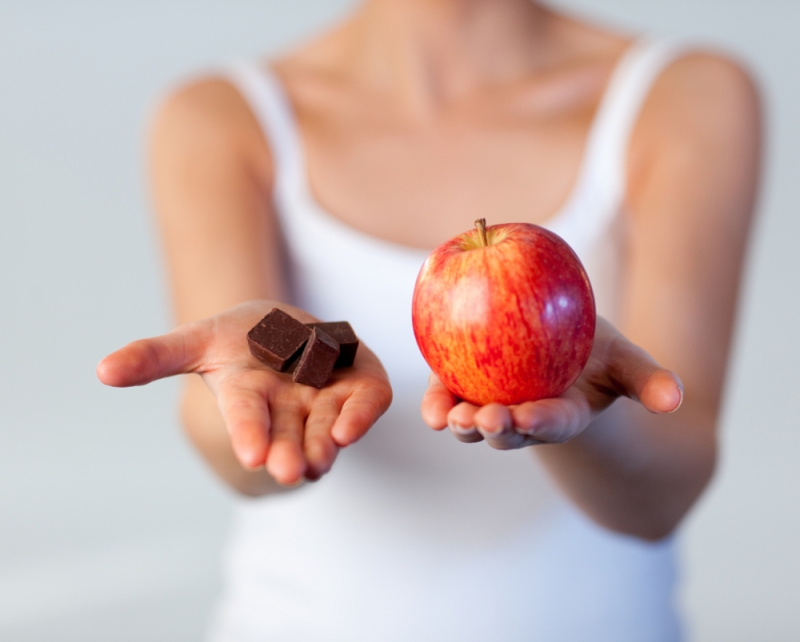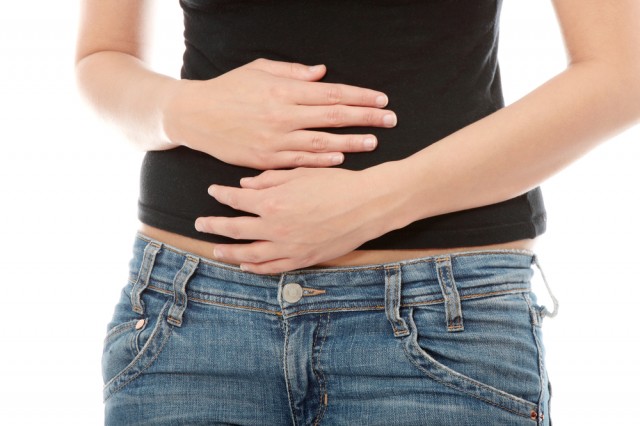Common Diet Mistakes Part 1
/There are umpteen articles written about everyday eating habits that people regularly make that are sabotaging their health (or weight-loss efforts, or any other precise wellness goal).
Sometimes these articles include incredibly helpful information about easy swaps (or the new "it" term: diet HACKS. We seem to really love the work "hack" these days) that we can make to better ourselves without a lot of effort.
Lack of effort seems to be key.
While this makes perfect sense, with our busy schedules and complex lives, it sure does place our food and eating habits way down on the priority totem pole.
I'm all for easy and manageable, but I'm also for recognizing that a big part of how we got here was by turning what and how we eat into an afterthought or annoyance.
Food is a necessity of life. It is one of the things that connects all human beings. We have to eat. Therefore, I think it behooves us to concern ourselves with the quality of our food: how it is grown, prepared and the impact that it has on our health.
With that in mind, I'm writing this article in multiple parts. First, I will provide some easy steps/swaps that do make a difference without requiring much lifestyle change. Then I will talk about some actual lifestyle modifications that will really shape your relationship to your food.
PART 1: 5 Easy Diet Modifications
USE APPROPRIATE FATS
Perhaps one of the easiest changes to make is to swap out any crappy oils and fats that you are currently using and simply use healthy, high quality ones that are meant for what you are doing. This means ditching trans fats and using only high heat oils when you are cooking at high temperatures. If you need a lovely list of oils/fats and their temperature range click here. Essentially there are oils you cook with and oils you toss with. These are what I recommend:
- For heat: coconut oil, avocado oil, ghee or butter
- For low/no heat: olive oil, walnut oil, almond oil, sesame oil, truffle oil
Pitch all of your ambiguous "vegetable oils" as they are surely trans fats. Say NO to stupid butter replacements, they are often full of rancid oils and trans fats. You are much better off buying real butter. Grass-fed, ideally.
Fat is important to do right. Most fat bypasses the liver and goes directly into our lymph after we digest it, meaning that toxins in fat are potentially more dangerous than water-soluble toxins. Buy organic as much as possible.
In addition to cooking properly with fat:
DON'T BE AFRAID OF FAT
Quit buying low-fat versions of things. Buy the full-fat version. If something is meant to contain fat and a company is trying to reduce the fat content, it will replace it with sugar. It then becomes a double whammy because now you are consuming twice the sugar without the fat present to slow down the absorption rate. Hello blood sugar spike! Your poor body's insulin will be in overdrive.
Yes, the full-fat versions will contain more calories. Adjust your portion sizes accordingly. But you should feel more satiated and your blood sugar won't spike. Plus, I mean, come on- it will taste better too.
In case this needs repeating: the fat-fearful age of the 1980's and 90's needs to go away now! We know that was a big mistake. It skyrocketed obesity in this country. Go back to eating food in it's original form, not some bastardized low-fat version. Eat real food.
DRINK WATER
Seriously people. Cool it with the sugary sodas, juices and "coffee" that is really a milk shake. A soda is not a thirst quenching beverage- it is a dessert. Let's be clear: soda is terrible for us and offers absolutely no nutritional value other than containing calories. Diet soda is worse. While it may be low in calories, the effect of the chemical cocktail on our bodies is worse than regular soda. If you occasionally want to consume a regular soda as a treat, fine. But recognize that it is a dessert item, not a beverage akin to water.
Juices are pretty terrible too. Unless you are drinking freshly squeezed juice (ideally of a vegetable variety) then you are essentially just drinking sugar. Yes, freshly pressed green juices have a lot of nutritional value, but store-bought apple juice does not. The vitamins degrade over time and store juices are pasteurized. In other words: the vitamin content is low while the sugar content is high. Lose the store-bought juice; instead, drink water and eat a piece of fruit.
Oh, and moderate amounts of coffee and tea are great, but a frappuccino and chai latte from Starbucks are, once again, dessert items. If you drink coffee and tea daily, ditch the sugar, or at least reduce it. If you don't like coffee without a massive amount of sugar and flavorings, you don't like coffee. Choose an alternate beverage. And if you don't like coffee, but "need" the caffeine, then there are a few options: fix your schedule and get more sleep (sorry, I realize that falls under the lifestyle section), try tea (there are lots of flavored teas that are flavored with fruit and spices, not sugar) try a B-complex in the morning (but not 5 Hour Energy- that thing is full of crap. Buy an actual B-complex vitamin), don't have a sugary breakfast- that will prevent the spike and crash.
GIVE UP THE NOTION OF A HEALTHY BAGGED SNACK
I'm really sorry to break it to you, but none of the snacks in the processed snack aisle are good for you. None of them. I don't care what claims a box or bag are making, but the chips, pretzels, popcorn, crackers etc. are NOT health food. The only possible exception are kale chips and other raw food snacks that are very expensive and only in health food stores. If you have the funds, then sure: buy containers of raw kale chips. But any classic processed-grain-based snack is not healthy for you. Act accordingly.
Since we are not yet into the lifestyle section where I can talk about snack preparation at home, let's focus on what you can just buy that is a healthy snack:
Crunchy
- Vegetables and hummus
- Pickles, sauerkraut, kimchi
- Nuts and seeds
- Edamame
- WHOLE FOOD fruit and nut bars. (No crazy additives, just whole food ingredients.)
- Kale chips or other raw food snacks (generally pricey)
- Dark chocolate (in moderation and I'm talking 55+% cacao)
Creamy
- Fruit and nut butters (I guess this can be crunchy or creamy)
- Yogurt
- Cheese (REAL cheese only. No weird ingredients.)
- Applesauce (No sugar added)
I doubt many of those were particularly new, but tough poo. If you are looking for snacks without the prep, then you already know the deal: fruits, vegetables, nuts and seeds are the main thing. Snacking can be a great opportunity to up your veggie and fruit intake, or to eat a bunch of crap. Either make the swap or consider limiting your snacking.
WHOLE GRAIN OVER WHITE
I'm guessing you've already heard about this, but plenty of people still buy the white stuff so here I go:
BUY WHOLE GRAINS INSTEAD OF THE WHITE STUFF.
In general, Americans eat too many grains, so if you can back off of the grains and swap them out for vegetables, even better. But, in the very least, if you are buying breads and pastas etc. buy the whole grain version. Even better, buy non-wheat whole grains to add variety to your diet and up your overall nutrition. Try millet, quinoa, buckwheat (it's not a wheat), farrow, barley, oats, rye, spelt, brown rice, red rice, black rice, wild rice, amaranth, teff....I could go on. Swap out your same-old white rice or pasta for something else and reap the fiber and vitamin rewards.
continuing on with grains:
SWAP OUT YOUR BREAKFAST CEREAL
Breakfast cereals, even ones without marshmallows, are highly processed. But let's use the good, better, best model. Below is a spectrum of breakfast cereals on a list from least desirable to best. These are just examples to give you an idea. Insert your current breakfast cereal choice as best you can. Then, no matter where you are starting from, swap your current choice for something at least one rung down.
- Pure Sugar Cereal. (There are marshmallows, the theme is that it tastes like a chocolate candy, or everything is frosted.)
- Highly processed cereal, but less added sugar (maybe it boasts being "whole grain" or having a lot of fiber but ultimately still super processed)
- Quick Oatmeal (less processed than traditional cereals, but the quick version is still somewhat processed in order to cook so quickly.)
- Slow cooking oats (Old fashioned or Steel Cut)
- Chia seed "cereal" with choice of milk and other goodies (such as fruit, nuts/seeds, cinnamon etc.)
The last option is a great unprocessed breakfast that still has the classic "cereal" presentation. Of course, if you are also willing to think outside the bowl and work with eggs, smoothies, yogurt, my grain-free pancakes, fruit, vegetable scrambles, etc. EVEN BETTER.
I hope those swaps seem doable and helpful.
Although, to be fair, I think that lifestyle is very important. If you are always eating on the run, choosing a better option at the store is a good hack, but meal planning and prep are key too. Those are coming up in Part 2.












